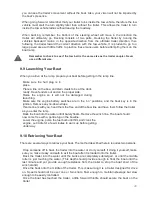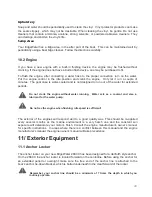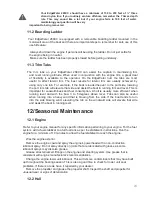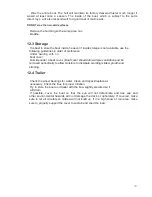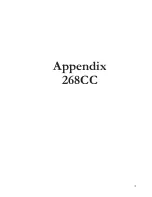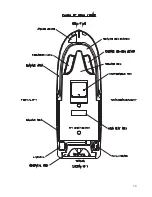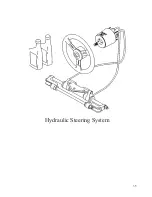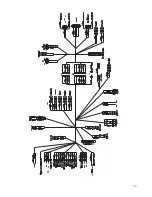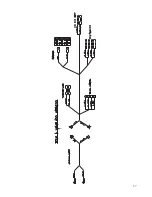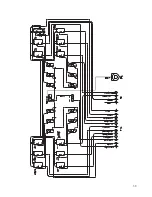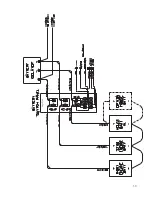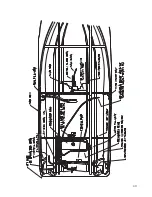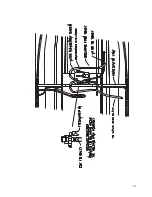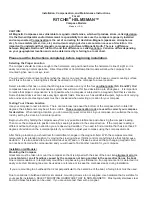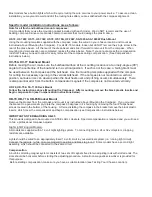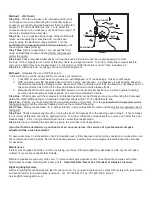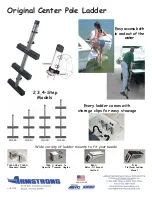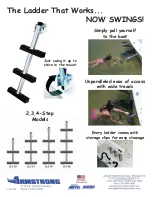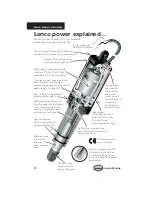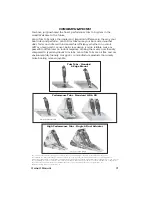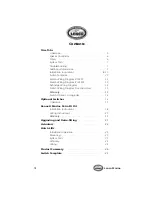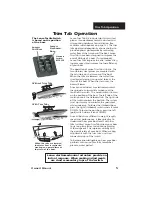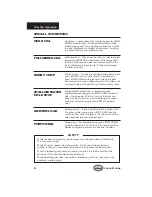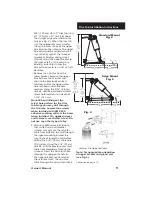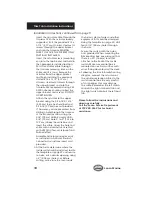
Installation, Compensation, and Maintenance Instructions
For all
RITCHIE
®
HELMSMAN™
Compass Models
Made in U.S.A.
CAUTION:
All Magnetic Compasses are vulnerable to magnetic interference, which will produce errors, called deviation.
It is the Owner/Operator and/or Helmsman’s responsibility to make sure the compass is properly installed
and compensated. Compensation is the act of correcting for deviation. Magnets (speakers, microphones
etc.), ferrous metals (steel, iron, etc.) and current carrying devices are common causes of deviation. It is
important to understand that magnetic compasses point toward Magnetic North. There is a difference
between Magnetic North and True North, and that difference is called variation. Variation differs depending
on your geographical location and can be determined by referring to a local chart.
Please read the Instructions completely before beginning installation.
Selecting the Proper Location
The compass should be close enough to the helmsman and positioned below the helmsman's line of sight so it is
easily read during normal operation. Direct Read Dial or CombiDamp Dial models will allow the compass to be
mounted higher, near or at eye level.
You will need a flat and level surface (when the boat is on a level keel). Many boats have a curved mounting surface
and if this is the case, a fairing block should be utilized to bring the compass to a level position.
Select a location that has no more that 20 degrees deviation on any of the four
cardinal points (N S E and W).
Most
compasses have a built in compensation system that will correct for fixed deviation up to 20 degrees. It is important
to realize that proper compensation is not possible when a compass is subjected to a magnetic field that is variable.
Some shipboard devices can cause varying magnetic fields. Devices such as windshield wipers, high current carrying
wire and even some steering wheels must be considered when selecting a location for your compass.
Testing Your Chosen Location
Use your compass to test a location. There are two brass rods near the bottom of the compass which rotate 360
degrees, the slotted ends may be all that is visible.
These compensation rods are used to correct your compass
for deviation
. When testing a location, you do not want pre-set corrections in your compass, so neutralize the comp-
rods by setting the slots in a horizontal position.
Begin your test by holding the compass away from any possible interference and observing the compass reading.
Then move the compass into position carefully; keeping it pointed in the same direction. If the compass reading is
different without a change in direction you are observing deviation. You need to find a location that has less than 20
degrees of deviation on the 4 cardinal points if you intend to adjust your compass using the compensator rods.
After finding a location you should test for intermittent changes in the magnetic field. With the compass mounted
temporarily in its intended position try moving the steering wheel, throttle controls or anything else that might cause
deviation. It is also advised to turn electrical devices off and on. Please be advised that a changing magnetic field
can not be corrected with compensation and you will need to find another location for your compass.
Installation (all Models)
Mounting the Compass
Great care must be taken to mount the compass so that it is aligned with the keel of the boat.
An alignment error is
a constant error on all headings caused by the compass not being pointed in the same direction as the boat
.
One recommendation is to temporarily mount the compass using one fastener so if an alignment error is detected it is
easily corrected. Masking tape can be used as a reference or to keep the compass steady during installation.
If you are mounting to a bulkhead that is not perpendicular to the centerline of the boat, a fairing block must be used.
Due to variations in bulkhead and deck materials, mounting screws are not supplied. Use hardware that is suitable for
your specific installation. SELECT MOUNTING HARDWARE THAT IS NON-MAGNETIC. Most quality stainless steel
and solid brass fasteners can be used. If you are unsure test them with a magnet.
Summary of Contents for 268 Center Console
Page 1: ...268CC 268 Center Console OWNER ASSISTANCE MANUAL Revised 2014...
Page 32: ...31 Appendix 268CC...
Page 33: ...34...
Page 34: ...35 Hydraulic Steering System...
Page 35: ...36...
Page 36: ...37...
Page 37: ...38...
Page 38: ...39...
Page 39: ...40...
Page 40: ...41...
Page 112: ......
Page 129: ......
Page 146: ...8 Rotation of Ports 1 2 3 4 5 6 7 1 Rotation of Pump Head 2 3 4 5...
Page 186: ...38 A B 50 mm C 20 mm...

